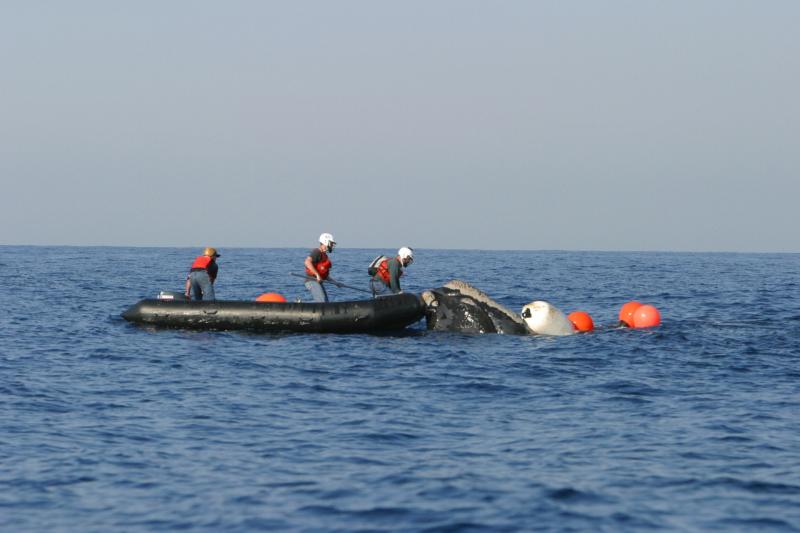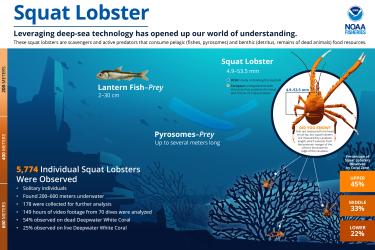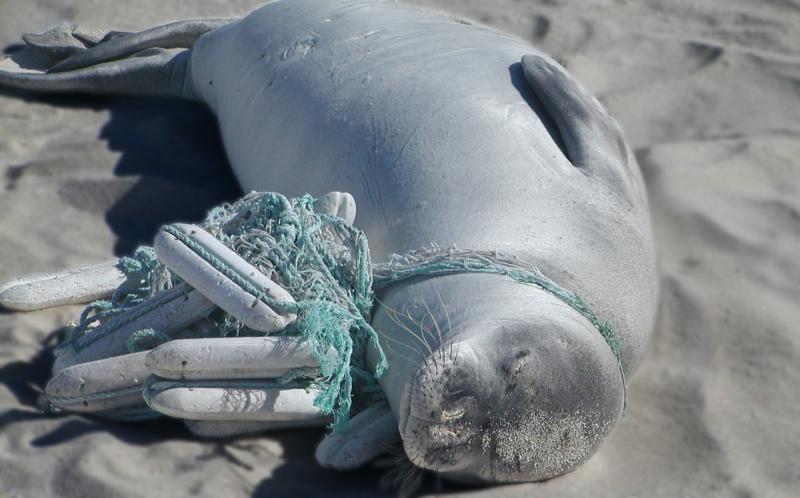NOAA Fisheries has released a National Report on Large Whale Entanglements Confirmed in the United States in 2017.
While many large whale populations are increasing in the United States, entanglements in fishing gear or marine debris represent a growing threat to the further recovery of these species. Severe entanglements can kill or seriously injure large whales, and entanglements involving threatened or endangered species can have significant negative impacts to the population as a whole.
NOAA Fisheries’ Marine Mammal Health and Stranding Response Program and our partners in the Large Whale Entanglement Response Network track and document as many of these incidents as possible. Entanglements represent an anthropogenic (caused by humans) threat to large whale populations. Entanglement data are used by scientists and managers to determine the effect of entanglement (e.g. rates and severity) on individuals and populations. Managers take the information gained to evaluate existing management measures and implement new management measures as warranted, to reduce the threat of entanglement to large whales.
In 2017, the National Large Whale Entanglement Response Network was able to respond to 50 of the confirmed entanglement cases and successfully remove entangling gear from 20 whales, increasing their chances of survival. The number of confirmed cases nationally, 76, was slightly above the 10-year average. Some of the entanglements involved endangered North Atlantic right whales on the East Coast and blue whales on the West Coast, which could impede recovery of these species.
NOAA Fisheries is extremely proud to work with our partners in the Large Whale Entanglement Response Network. The Network is comprised of highly skilled experts and trained response teams along all coasts. NOAA Fisheries maintains regional entanglement reporting hotlines that allows reports of entangled whales to quickly be relayed to the appropriate responders.
Members of the public should not attempt to disentangle whales themselves but call authorized professional responders instead. Disentangling large whales is a dangerous activity that requires years of training, specialized knowledge and skills, and customized tools and equipment to ensure the safety of the animals and the response team. In addition, authorized Network responders can typically remove more of the entangling gear than members of the public, which leads to better outcomes for the individual whale and gaining better information towards reducing entanglement threats and impacts in the future. If you encounter an entangled large whale, please call your regional hotline:
- Atlantic and Gulf Coasts - (866) 755-6622
- California, Oregon, and Washington - (877) SOS-WHALE (877-767-9425)
- Alaska - (877) 925-7773
- Hawaii - (888) 256-9840
Watch this video of a humpback whale disentanglement in Unalaska Bay, near Dutch Harbor, Alaska.


